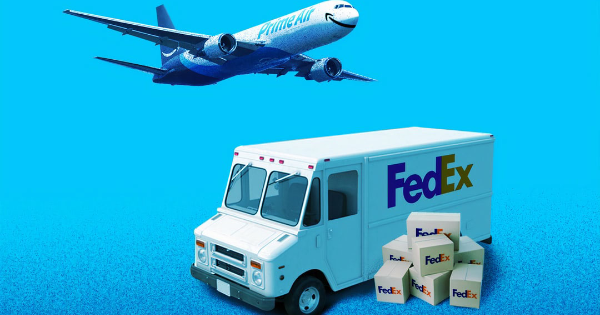Many small businesses and entrepreneurs rely on the USPS to make shipments. This is especially true of international entrepreneurs who may otherwise have to pay substantial shipping costs that are more expensive than the item being shipped. An end to the USPS could not only mean a significant loss to small businesses but also a shift toward larger carriers like FedEx.
|
The U.S. Postal Service has been hit hard by the COVID-19 pandemic, suffering a $4.5 billion net loss in its most recently reported quarter. After decades of operating without taxpayer subsidy, the public service received no rescue funding since the beginning of the COVID-19 crisis. To stay afloat, the USPS has been prohibiting overtime and cutting transportation costs.
Many small businesses and entrepreneurs rely on the USPS to make shipments. This is especially true of international entrepreneurs who may otherwise have to pay substantial shipping costs that are more expensive than the item being shipped. An end to the USPS could not only mean a significant loss to small businesses but also a shift toward larger carriers like FedEx. August 7, 2020 Update
This is the most aggressive Peak Season pricing strategy we have seen UPS take. It is geared towards E-Commerce / Residential Shippers and the goal seems to be to 2-fold: 1. Control the influx / flow of weekly package volume into the UPS network between Nov 15th 2020 - Jan 16th, 2021. UPS is using Price to try and drive shippers' behavior to help them better control and manage Peak Season weekly package volume flow in their network. The 3 tier surcharge matrix in section F seems to be designed to control the rate of volume a shipper plans to tender to UPS each week during the peak Period and / or for shippers to spread package volume to other Parcel Carriers: USPS, FedEx, Ontrac, Lasership each week during the peak period. 2. UPS is going to make more $$$ in Peak 2020. UPS and their new CEO, Carol Tome, know shippers are in a very tough situation due to COVID-19 and have to use Parcel Carriers to drive sales and get products to customers. She has said publicly that UPS needs to get smaller and charge more for their services. https://www.bloomberg.com/opinion/articles/2020-07-30/ups-new-ceo-carol-tome-has-impressive-earnings-debut AFMS helps companies mitigate these carrier announcements. Please feel free to contact us today and let us review the impact on your company.  E-commerce businesses are thriving right now. In fact, up to 2,760 packages are shipped every second. However, despite a thriving market, shipping costs are still one of the highest expenses when it comes to order fulfillment. With the surcharge increases recently implemented by FedEx and UPS are here to stay, it comes as no surprise that many businesses are questioning their shipping carrier strategies. Compared to traditional retail companies, e-commerce businesses typically employ small parcel providers. But it's important to consider your options as your business grows to determine whether using multiple carriers or using a single carrier is in your best interest. Every year, businesses ship billions of parcels across the country and worldwide to deliver their products to happy customers. In 2018 alone, approximately 13 billion parcels were shipped. To ensure that customers stay happy and get their parcels on time, businesses rely on carriers and shipping contracts to transport their products. However, because carriers also need to make money, it's not uncommon for shipping parcel contracts to try and take advantage.
To help you avoid wasting money on services that you don't need to pay for, here are a couple of the most common contract errors that your parcel contract is actually hindering rather than helping your business and what you can do to stop it. |
Categories
All
Archives
January 2024
|


